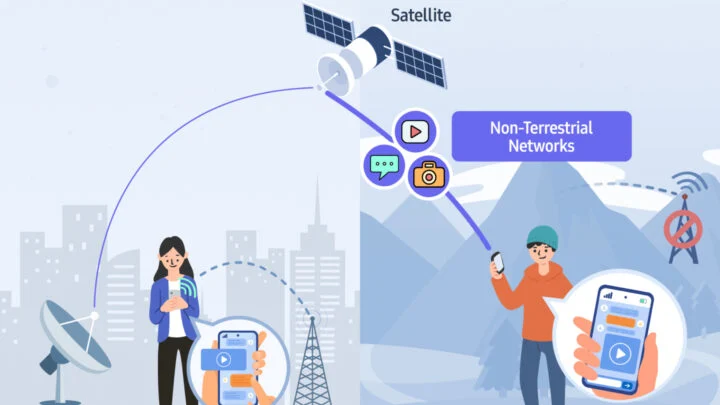Last year, there were rumors that Samsung would equip the Galaxy S23 with satellite connectivity for emergency calls and messaging, similar to the iPhone 14. But that did not happen, and the Galaxy S23 does not have a satellite connection for emergency services. Samsung is reportedly bringing satellite connectivity to its phones next year.
South Korean Science and ICT Minister Lee Jung-ho said in an interview with Yonhap News that domestic smartphone brands are expected to launch a service that enables data transmission between 5G phones and satellites next year. With Samsung being the only major smartphone brand in South Korea (after LG shutting down its smartphone division), it’s widely known that Samsung may offer satellite connectivity to its phones next year.
Lee Jung Ho said in an interview, “I can’t say for sure, but I know that the domestic industry is considering the possibility of commercializing the service, waiting for a standard for satellite communications to be prepared next year.»
The Snapdragon 8 Gen 2, used in Samsung’s high-end phones released this year, can connect to LEO (Low Earth Orbit) satellites for emergency calls and messaging services. However, the Galaxy S23, Galaxy Z Flip 5 and Galaxy Z Fold 5 do not have satellite connectivity. Earlier this year, Samsung announced that the satellite ecosystem is not mature yet and will wait for the ecosystem to evolve before introducing a new feature. The South Korean firm is said to be working with Iridium Communications, which has a group of satellites in low Earth orbit for emergency communications.
The company is expected to launch the Galaxy S24 next year in the first quarter of the year. Galaxy S24, Galaxy S24+ and Galaxy S24 Ultra are expected to be two versions with Exynos 2400 chip and Snapdragon 8 Gen 3 processor. feature in hardware levels Samsung has developed its own bidirectional satellite communication for Exynos chips which can be used in Galaxy S24. Currently, only Huawei phones have satellite connectivity in the Android ecosystem.
Two-way emergency satellite link allows phones to connect to low Earth orbit satellites to make calls and send messages when there is no mobile network nearby. This allows you to rescue users lost in an area without cellular communication or provide them with medical assistance. In the future, technology may allow ordinary phones to have two-way satellite communication without additional equipment, and such technology has been tested on the Galaxy S22.













